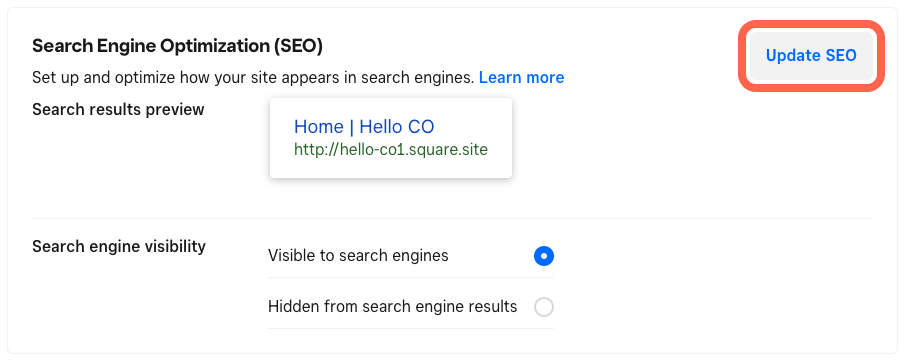Introducing the Unconventional Mediums in Google Analytics Beyond Default Setups
In the world of digital analytics, Google Analytics stands as a cornerstone for services seeking to understand their on the internet presence. While default settings supply beneficial understandings, real deepness of comprehending lies in checking out the unique tools that commonly go unnoticed. By venturing beyond the surface and diving right into the ins and outs of social media data, email campaign efficiency, recommendation website traffic sources, direct traffic patterns, and custom channel collections, a treasure of information waits for those willing to welcome a more nuanced approach. What exists under these unusual mediums might just redefine exactly how services view and strategize their on the internet initiatives.

Leveraging Social Media Insights
Occasionally ignored, yet tremendously beneficial, is the practice of leveraging social networks insights within the world of Google Analytics. By incorporating data from platforms like Facebook, Twitter, Instagram, and LinkedIn right into Google Analytics, services can obtain a much deeper understanding of their target market and the efficiency of their social media sites campaigns.
Through this integration, online marketers can track and analyze customer actions on their web site that originates from social media sites platforms. They can identify which social networks networks are driving one of the most traffic, which web content is resonating with the target market, and which projects are transforming the most leads. This insight allows for data-driven choices to optimize social media sites strategies and enhance total marketing performance.
Moreover, by combining social media sites insights with Google Analytics, services can develop much more targeted and individualized campaigns - what is not considered a default medium in google analytics. They can use demographic info, interests, and online behaviors gathered from social networks to fine-tune their audience segmentation and supply customized messages that reverberate with particular consumer groups. This targeted technique can lead to greater engagement, increased conversions, and inevitably, enhanced return on financial investment
Revealing Email Campaign Efficiency
Revealing Email Project Performance includes examining essential metrics and efficiency signs to examine the performance of email marketing efforts. When diving into e-mail project efficiency, it is important to examine metrics such as open prices, click-through prices, conversion rates, and unsubscribe rates. Open prices suggest the percent of receivers that opened the e-mail, providing insight into the effectiveness of subject lines and sender names. Click-through rates measure the percent of receivers that clicked links within the email, showing interaction degrees. Conversion rates track the percent of receivers who finished a desired action after clicking on a web link in the email, such as purchasing or signing up for a newsletter. Unsubscribe rates highlight the number of receivers who chose out of getting further emails, losing light on e-mail material high quality and relevance. By evaluating these metrics, online marketers can fine-tune their email campaigns for far better interaction and performance.
Analyzing Reference Website Traffic Sources
After reviewing the efficiency of email campaigns with vital metrics such as open prices and conversion rates, the following crucial action is examining recommendation web traffic resources in Google Analytics to comprehend where website visitors are originating from and how they engage with the site. official site Recommendation web traffic sources describe the sites that route individuals to your site with clickable web links. By delving into this information, services can obtain understandings into which exterior platforms are driving website traffic to their website, whether it be social media platforms, partner websites, or online directory sites.
It assists organizations recognize high-performing recommendation resources that add substantially to site traffic and conversions. Google Analytics provides comprehensive records on recommendation website traffic, allowing services to track the efficiency of each reference resource properly and make data-driven decisions to enhance their on-line visibility.
Checking Out Direct Web Traffic Patterns
Exploring the direct web traffic patterns in Google Analytics offers important understandings into customer habits and the effectiveness of projects - what is not considered a default medium in google analytics. Direct traffic refers to visitors who come down on a website by straight keying the URL into their internet browser, utilizing book marks, or clicking untagged web links. Recognizing straight website traffic patterns can aid marketers evaluate the influence of offline advertising and marketing initiatives, brand acknowledgment, and the performance of word-of-mouth recommendations
By delving right into direct web traffic data, businesses can discover important information about customer intent and brand have a peek at this site loyalty. Examining the behavior of direct visitors, such as the pages they visit, the moment invested in site, and the conversion price, can offer a deeper understanding of individual engagement and the overall performance of the site in transforming site visitors right into clients.
Additionally, tracking straight traffic patterns in time enables organizations to determine trends, seasonality results, and the success of details projects or promos in driving direct visits. This details can after that be used to improve marketing strategies, enhance internet site content, and improve the total user experience to maximize conversions.
Utilizing Personalized Network Groupings
Utilizing personalized channel collections in Google Analytics enables organizations to classify and analyze their internet site traffic based upon certain requirements, providing valuable insights for optimizing advertising methods. Custom-made channel groupings enable companies to produce their own personalized groupings of website traffic resources, such as social media sites, natural search, email campaigns, and recommendation traffic. By specifying these groupings, companies can gain a much deeper understanding of exactly how various marketing channels add to their site web traffic and conversions.
This attribute is particularly helpful for companies with diverse advertising strategies across various systems. As an example, a company running both paid and natural social networks campaigns can set apart between both to assess their specific performance precisely. Furthermore, custom-made network groupings can help recognize any type of forgotten or ignored web traffic resources that may be driving important engagement.
Final Thought

By venturing past the surface area and diving right into the ins and outs of social media information, e-mail campaign performance, referral web traffic resources, straight website traffic patterns, and custom network groups, a prize trove of info waits for those willing to accept a much more nuanced approach. They can determine which social media networks are driving the most traffic, which web content is reverberating with the audience, and which campaigns are converting the most leads.After reviewing the performance of e-mail campaigns through crucial metrics such as open rates and conversion rates, the next crucial action is analyzing referral web traffic sources in Google Analytics to recognize where internet site site visitors are coming from and how they communicate with the site. Custom-made network collections enable companies to produce their own personalized groupings of web traffic sources, such as social media, natural search, e-mail projects, and recommendation web traffic. By leveraging social media understandings, discovering email project efficiency, analyzing recommendation traffic resources, checking out straight traffic patterns, and making use of personalized channel groups, online marketers can obtain valuable understandings into their online visibility.
Comments on “Debunking What Is Not Considered a Default Medium in Google Analytics”